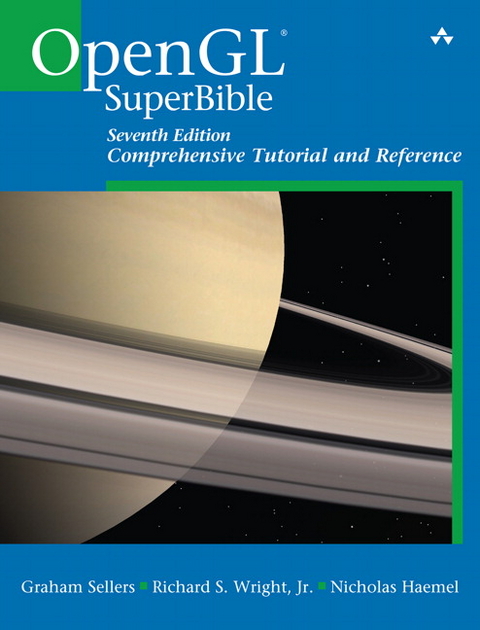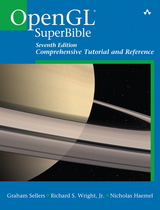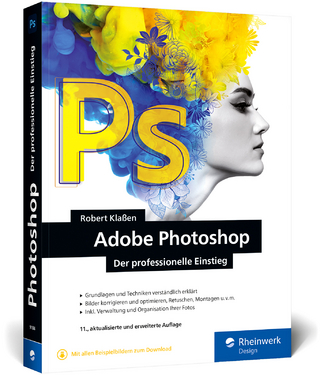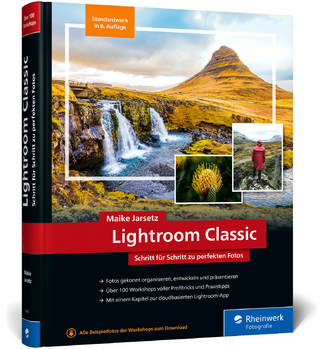OpenGL Superbible
Addison-Wesley Educational Publishers Inc (Verlag)
978-0-672-33747-5 (ISBN)
- Titel z.Zt. nicht lieferbar
- Versandkostenfrei innerhalb Deutschlands
- Auch auf Rechnung
- Verfügbarkeit in der Filiale vor Ort prüfen
- Artikel merken
The best introduction for any developer, it clearly explains OpenGL's newest APIs; key extensions; shaders; and essential, related concepts. You'll find up-to-date, hands-on guidance for all facets of modern OpenGL development-both desktop and mobile. The authors explain what OpenGL does, how it connects to the graphics pipeline, and how it manages huge datasets to deliver compelling experiences. Step by step, they present increasingly sophisticated techniques, illuminating key concepts with worked examples. They introduce OpenGL on several popular platforms, and offer up-to-date best practices and performance advice.
This revised and updated edition introduces many new OpenGL 4.5 features, including important ARB and KHR extensions that are now part of the standard. It thoroughly covers the latest Approaching Zero Driver Overhead (AZDO) performance features, and demonstrates key enhancements with new example applications.
Coverage includes
- A practical introduction to real-time 3D graphics, including foundational math
- Core techniques for rendering, transformations, and texturing
- Shaders and the OpenGL Shading Language (GLSL) in depth
- Vertex processing, drawing commands, primitives, fragments, and framebuffers
- Compute shaders: harnessing graphics cards for more than graphics
- Pipeline monitoring and control
- Managing, loading, and arbitrating access to data
- Building larger applications and deploying them across platforms
- Advanced rendering: light simulation, artistic and non-photorealistic effects, and more
- Reducing CPU overhead and analyzing GPU behavior
- Supercharging performance with persistent maps, bindless textures, and fine-grained synchronization
- Preventing and debugging errors
- New applications: texture compression, text drawing, font rendering with distance fields, high-quality texture filtering, and OpenMP
Graham Sellers, AMD Software Architect and Engineering Fellow, represents AMD at the OpenGL ARB. He has contributed to the core OpenGL specification and extensions, and holds several graphics and image processing patents.
Richard S. Wright, Jr., Senior Software Engineer for Software Bisque, developed multimedia astronomy and planetarium software using OpenGL. For more than a decade he taught OpenGL programming in Full Sail University's game development degree program.
Nicholas Haemel, Director of Camera Software at NVIDIA, has represented NVIDIA at the Khronos Group standards body and authored many OpenGL extensions.
Figures xv Tables xxi Listings xxiii Foreword xxxi Preface xxxiii Acknowledgments xxxix About the Author xli Part I: Foundations 1 Chapter 1: Introduction 3 OpenGL and the Graphics Pipeline 4 The Origins and Evolution of OpenGL 6 Primitives, Pipelines, and Pixels 10 Summary 11 Chapter 2: Our First OpenGL Program 13 Creating a Simple Application 14 Using Shaders 17 Drawing Our First Triangle 24 Summary 26 Chapter 3: Following the Pipeline 27 Passing Data to the Vertex Shader 28 Passing Data from Stage to Stage 30 Tessellation 33 Geometry Shaders 37 Primitive Assembly, Clipping, and Rasterization 39 Fragment Shaders 43 Framebuffer Operations 47 Compute Shaders 48 Using Extensions in OpenGL 49 Summary 54 Chapter 4: Math for 3D Graphics 55 Is This the Dreaded Math Chapter 56 A Crash Course in 3D Graphics Math 57 Understanding Transformations 69 Interpolation, Lines, Curves, and Splines 89 Summary 97 Chapter 5: Data 99 Buffers 100 Uniforms 117 Shader Storage Blocks 140 Atomic Counters 147 Textures 152 Summary 203 Chapter 6: Shaders and Programs 205 Language Overview 206 Compiling, Linking, and Examining Programs 219 Summary 238 Part II: In Depth 239 Chapter 7: Vertex Processing and Drawing Commands 241 Vertex Processing 242 Drawing Commands 249 Storing Transformed Vertices 278 Clipping 296 Summary 303 Chapter 8: Primitive Processing 305 Tessellation 306 Geometry Shaders 333 Summary 364 Chapter 9: Fragment Processing and the Framebuffer 365 Fragment Shaders 366 Per-Fragment Tests 369 Color Output 382 Off-Screen Rendering 390 Antialiasing 412 Advanced Framebuffer Formats 428 Point Sprites 448 Getting at Your Image 458 Summary 466 Chapter 10: Compute Shaders 467 Using Compute Shaders 468 Examples 479 Summary 502 Chapter 11: Advanced Data Management 503 Eliminating Binding 504 Sparsely Populated Textures 509 Texture Compression 516 Packed Data Formats 525 High-Quality Texture Filtering 527 Summary 531 Chapter 12: Controlling and Monitoring the Pipeline 533 Queries 534 Synchronization in OpenGL 556 Summary 562 Part III: In Practice 565 Chapter 13: Rendering Techniques 567 Lighting Models 568 Non-Photo-Realistic Rendering 610 Alternative Rendering Methods 613 Two-Dimensional Graphics 647 Summary 659 Chapter 14: High-Performance OpenGL 661 Optimizing CPU Performance 661 Low-Overhead OpenGL 677 Performance Analysis Tools 699 Summary 726 Chapter 15: Debugging and Stability 729 Debugging Your Applications 730 Security and Robustness 737 Summary 742 Appendix A: Further Reading 743 Appendix B: The SBM File Format 749 Appendix C: The SuperBible Tools 759 Glossary 797 Index 805
| Erscheint lt. Verlag | 13.8.2015 |
|---|---|
| Reihe/Serie | OpenGL |
| Verlagsort | New Jersey |
| Sprache | englisch |
| Maße | 181 x 233 mm |
| Gewicht | 1612 g |
| Einbandart | kartoniert |
| Themenwelt | Informatik ► Grafik / Design ► Digitale Bildverarbeitung |
| Informatik ► Grafik / Design ► Film- / Video-Bearbeitung | |
| Mathematik / Informatik ► Informatik ► Software Entwicklung | |
| Schlagworte | OpenGL |
| ISBN-10 | 0-672-33747-9 / 0672337479 |
| ISBN-13 | 978-0-672-33747-5 / 9780672337475 |
| Zustand | Neuware |
| Haben Sie eine Frage zum Produkt? |
aus dem Bereich




